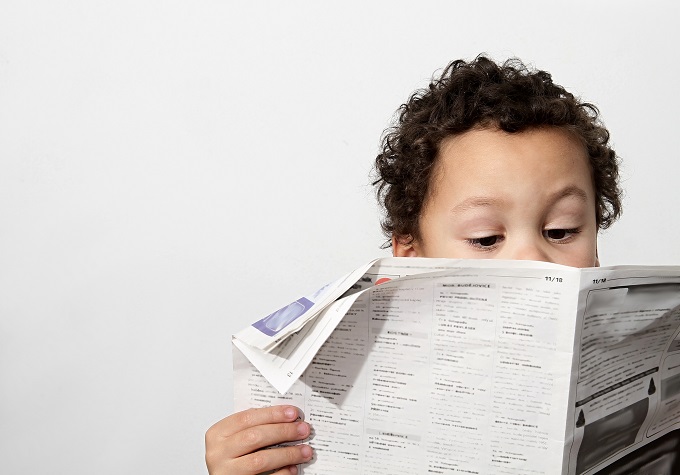Learning outside the classroom in 2025
Get some inspiration for 2025 external learning activities, from museums and art galleries, to zoos and wildlife parks, and adventure activities.

External learning continues to be a valuable educational experience, helping to reinforce and strengthen curriculum aligned classroom teaching. And as the school year draws to a close, it is worthwhile considering what external learning opportunities might be right for your students in 2025.
Read the latest print edition of School News HERE
Studies have consistently shown the benefits of external learning on student achievement and overall well-being. According to School Activities Australia, excursions provide another dimension to class-based learning, reinforcing ideas and concepts with hands-on experiences.
Research published in The Journal of Human Resources found that external learning delivers a host of positive social and academic outcomes.
“If schools make culturally-enriching field trips an integral part of the education experience, all students — especially those whose parents have a harder time accessing these experiences on their own — would benefit,” said Jay P. Greene, one of the study’s co-authors and a senior research fellow at the Heritage Foundation.
In the study, researchers assigned more than 1000 fourth- and fifth-grade students to two groups. One group participated in three to six “culturally-enriching” field trips, while the other group stayed in the classroom.
The study found that students in the field trip group “scored higher on end-of-grade exams, received higher course grades, were absent less often, and had fewer behavioural infractions,” compared to students in the control group.
Exposure to new experiences is a key advantage of external learning. Outside the classroom, students can observe native wildlife, explore different cultures, and visit iconic buildings and landmarks. These encounters provide opportunities to interact with things that are not available within the school grounds, expanding students’ horizons in profound ways.
Excursions and field trips have also been found to promote greater social ties for students. School excursions often require small group work, providing students an opportunity to socialise with peers they may not ordinarily interact with inside of the classroom setting.

When it comes to learning about sustainability and the natural world, learning outside the classroom offers a powerful way for students to engage with environmental and sustainable concepts in a hands-on, meaningful way.
By stepping into natural environments, students can observe ecosystems firsthand, learn about biodiversity, and develop an appreciation for the planet’s resources. Trips to national parks and wildlife rescue centres can introduce students to real-world sustainability practices and foster a deeper connection with native flora and fauna.
Additionally, eco-focused activities such as tree planting, beach cleanups, or a trip to your local recycling centre or waste management station can help students understand environmental stewardship and foster a sense of responsibility for the natural world.
Visiting historic sites or landmarks is an impactful way to make history come alive for students, providing them with immersive experiences that go beyond classroom resources. These visits allow students to explore important landmarks, walk in the footsteps of historical figures, and gain a deeper understanding of Australia’s history. Whether touring historic homes, visiting war memorials, or looking at ancient Indigenous artefacts at the museum, external learning allows students to engage with the past in a tangible and memorable way.
While learning usually happens in class groups, external learning opportunities can be delivered flexibly. Rather than taking a whole class or year level on an excursion, students could undertake external activities in music, drama or sporting groups, or for students with a particular interest in a topic. This means the learning experience can be tailored specifically to that group of students.

Many external learning experiences are facilitated by staff from the site your school group is visiting. This means students will have access to an expert in the field, who can provide new information and fresh insights. Students will benefit from the opportunity to talk to and ask questions of external learning facilitators, to extend their knowledge and pursue lines of enquiry which interest them.
Incorporating dynamic and engaging excursions into the curriculum is essential for schools aiming to provide students with a well-rounded education. By aligning external learning opportunities with learning outcomes, schools can ensure that students develop practical skills, build social connections, and retain classroom knowledge—all while having fun and staying engaged.
Inspiration for your 2025 external learning adventures
A wide range of external learning opportunities are available for school groups around the country. Watching performances from orchestras and theatre groups, exploring museums and art galleries, visiting important historical and cultural sites, and enjoying adventure activities on school camps and excursions are all excellent ways to reinforce classroom learning.
The Northern Territory Government’s tourism department (Tourism NT) has worked with tourism businesses, schools, national parks and other services to create NT Learning Adventures (NTLA). A collaboration of tour, transport, accommodation, attraction and experience providers, NTLA partners offer specialised services for the education sector. The program aims to make it easier for educators and school excursion organisers to choose the best options for their students.
The Northern Territory (NT) authentically connects students to the living culture of Australia’s Aboriginal peoples with unrivalled opportunities for cultural immersion, authentic exchange and two-way learning. From the majesty of Uluru to the detailed rock art in Kakadu, it’s the ideal destination to deliver on many learning outcomes of the Australian curriculum.
The Sydney Jewish Museum in Darlinghurst was established by Holocaust survivors who wanted a space to share their stories and give history a voice. Their voices remain at the centre of everything at the museum, making the study of history and culture more meaningful and relevant.
The museum’s curriculum-linked programs are designed to complement the work done in classrooms extending your students’ knowledge and enabling them to further develop their critical thinking and empathy.
The museum offers two-hour, three-hour and full-day excursions that include talks from Holocaust survivors, a guided tour of the museum and curriculum-linked workshops with expert educators covering a range of topics including the Holocaust, Judaism, Power and Authority, Human Rights, Historical Texts, Historical Fiction, Film, Migration and more.

The Old Treasury Building is a unique resource for students and teachers. Programs aligned to the Victorian Curriculum discuss various topics including democracy, the gold rush and early Melbourne.
Excursions to the Old Treasury Building, delivered by professional guides, take students from the original gold vaults, designed to hold the precious metal from the 19th century Victorian gold fields, to the Executive Council Chamber, where Victorian bills become law. Along the way they’ll discuss how Melbourne evolved from early settlement to Marvellous Melbourne, and expose the underbelly of how colonisation impacted the local First Nations peoples.
Students will consider everyday struggles for democratic rights, including women’s rights and the fight for First Nations recognition. They will also discuss the Ballarat Reform League and influence of the Eureka Stockade on Victorian governance. Temporary exhibitions help to flesh out these stories.
In addition to the Old Treasury Building’s one-hour paid programs, extensively researched articles covering a multitude of topics are available for free online.
World Science Festival Brisbane returns to Queensland Museum Kurilpa and across Brisbane from March 21 to 30, 2025. For the inventors, explorers, creative thinkers and scientists of tomorrow, engage your students in curriculum-aligned STEM programming with some of the world’s greatest minds.
Program highlights include Epic Engineering, a multi-media stage show for students in Years 7 to 12, presenting the future of groundbreaking innovation and inspiring projects that made the impossible possible; and Patch Theatre’s Queensland premiere of Superluminal, an enchanting blend of bold visual design, collaborative storytelling and interactive play for students from Prep to Year 3.
WSFB is also pleased to introduce Labs Unlocked for the 2025 Schools program. Students in Years 9 to 12 are invited to step inside some of Brisbane’s most exciting labs for an inspiring introduction into genetics, biomedical research and ecological engineers.

Hartley’s Crocodile Adventures is one of the longest operating tourist attractions in the Cairns region, and is a member of the Advance Eco Tourism Accredited Hall of Fame. Nestled in the heart of the Wangetti Valley, this sustainable wildlife sanctuary offers visitors the opportunity to see crocodiles in a natural melaleuca wetland lagoon, as well as cassowaries, native and exotic reptiles, kangaroos and birds in an expansive woodland forest and the sustainable crocodile farm.
A new Hartley’s Croc Centre will open in November 2024 as a unique educational and interactive attraction. The centre takes visitors on a journey through ‘Croc Time’, featuring First Nations information, crocodile hunting through to conservation and eventual protection. Hartley’s and local history is explored, then concluding with croc wise messages and recent DES research.
More than 250 metres of timber boardwalks and pathways will take students on a journey of discovery through eucalypt woodlands, notophyll rainforest and wetlands for an authentic wildlife experience. All wildlife exhibits are open to public viewing, including the komodo dragon, alligators, cassowaries, wombats, koalas, emus, lizards, kangaroos and wallabies. The Hartley’s team pride themselves on providing each school group with individual attention, with an experience that is best suited to their specific learning requirements.
This article was first published in the Term 4 edition of School News. Read it HERE







